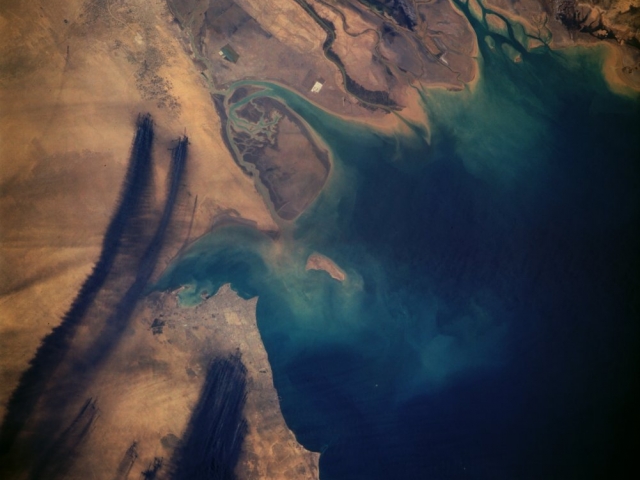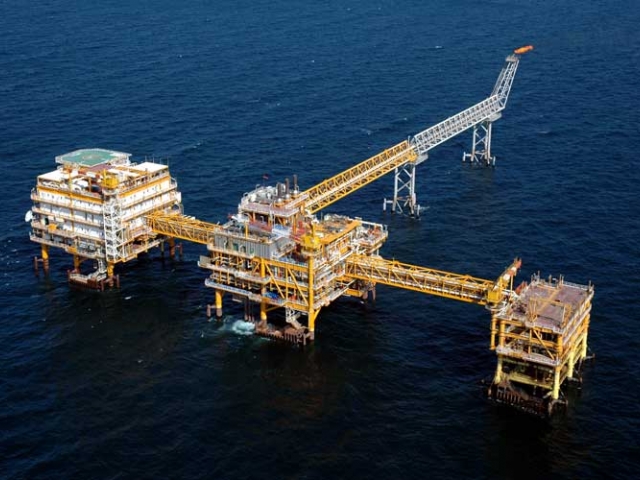
Top 7 winter drinks from around the world
Winter is the perfect time to curl up in a warm blanket and enjoy drinks that bring coziness and holiday cheer. Here are seven winter drinks that are perfect for cold days




Chicontepec, Mexico
Estimated oil: 19 billion tons
The absolute leader in terms of the stored oil reserves is Chicontepec, a huge oil and gas field in Mexico. It covers an area of around 4 thousand square kilometers in the states of Veracruz, Hidalgo and Puebla. The estimated oil in place is between 19 to 22 billion tons. Chicontepec is also rich in natural gas reserves. According to experts, the volume of gas is about a trillion cubic meters.

Ghawar, Saudi Arabia
Estimated oil: 18 billion tons
The second biggest oil field in the world is the Ghawar oil field. It is located in the basin of the Persian Gulf. The Ghawar oil field occupies the territory of 8400 sq. km. This is one of the biggest oil fields in the world that is entirely owned by Saudi Aramco, the state run Saudi oil company.

Greater Burgan, Kuwait
Estimated oil: 13 billion tons
The Greater Burgan is on the third place. It is a group of oil fields that contains 5% of the world's discovered oil reserves. It includes 3 oil fields: Burgan, Ahmadi and Magwe (920 sq. km.). The Greater Burgan is operated by a state-owned Kuwait Petroleum Corp.

Carioca/Sugar Loaf, Brazil
Estimated oil: 11 billion tons
The Carioca/Sugar Loaf is the fourth biggest oil field in the world. It is located in the Atlantic Ocean and operated by Petrobras. The most of the oil in this formation is light crude oil. The total oil in place is up to 70 billion barrels, or 11 billion tons, the amount of recoverable oil is about 5.7 billion tons.

Zakum, UAE
Estimated oil: 10.7 billion tons
Number five is the Zakum group of fields, the giant formation in UAE that consists of the Lower and the Upper Zakum oil fields. The oil fields are operated and owned by Abu Dhabi National Oil Company (ADNOC). International companies ExxonMobil and Japan Oil Development Co. are also involved in the production.

Safaniya, Saudi Arabia and Kuwait
Estimated oil: 10.35 billion tons
The Safaniya Field is on the sixth place. It is an oil and gas field, located on the territories of Saudi Arabia and Kuwait. Companies from both countries operate at the field: Saudi Aramco and Kuwait Petroleum Corp.

Bolivar Coastal Field, Venezuela
Estimated oil: 8.3 billion tons
Number seven is the Bolivar Coastal Field. It is a group of oil and gas fields in the Maracaibo basin, Venezuela. The fields are owned and operated by Petroleos de Venezuela.

Samotlor, Russia
Estimated oil: 7.1 billion tons
The Samotlor oil field is the largest oil field in Russia and the eighth largest in the world. The field is located at the Samotlor Lake in the central part of the West Siberian Plain. The Samotlor oil field is owned and operated by Rosneft.

South Pars/North Dome, Iran and Qatar
Estimated oil: 7 billion tons
The South Pars/North Dome field is a natural gas condensate field located in the Persian Gulf. It is shared between Iran (South Pars) and Qatar (North Dome). The formation is divided by a tectonic fault. In total the field holds an estimated 7 billion tons of natural gas condensates.

Kashagan, Kazakhstan
Estimated oil: 6.4 billion tons
Number ten is the Kashagan field, an offshore oil and gas field in Kazakhstan. Kashagan is operated by North Caspian Operating Company (NCOC). Offshore facilities at the field are installed on artificial islands.

Winter is the perfect time to curl up in a warm blanket and enjoy drinks that bring coziness and holiday cheer. Here are seven winter drinks that are perfect for cold days

Despite the widespread belief that ultra-wealthy individuals are leaving big cities in search of privacy, most still prefer to live in bustling metropolises, according to the latest billionaire census conducted by Altrata. Let's explore which cities today have the largest concentration of people with a fortune exceeding $1 billion

The European Union currently includes 27 member states, but the interest in joining continues to grow, with an increasing number of countries aspiring to become part of the bloc. This article highlights the countries advancing toward European integration and examines where they stand on this path